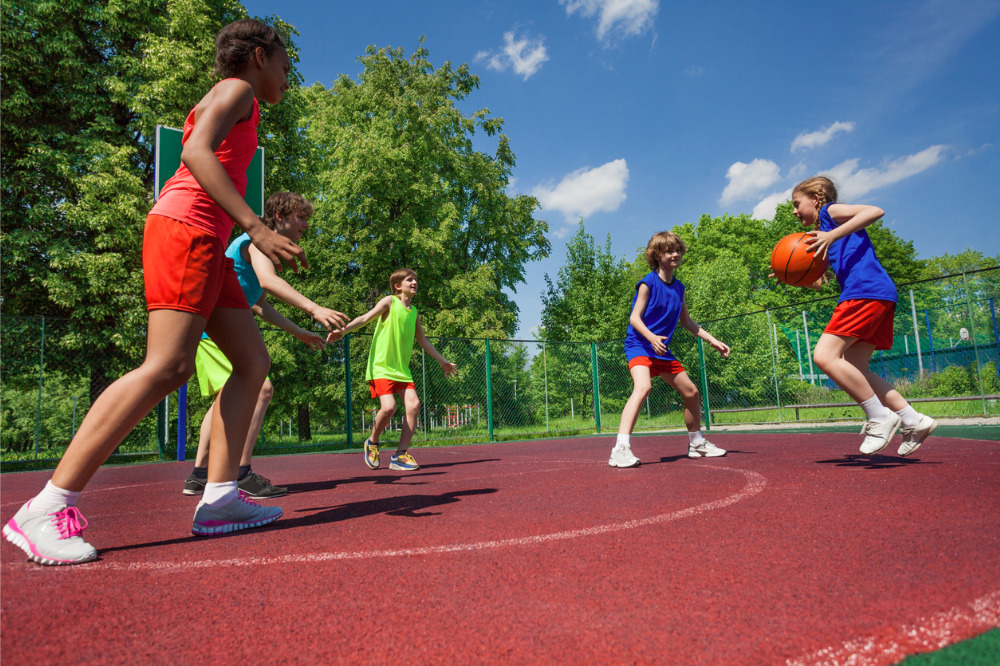
Studies conducted since the outbreak of the COVID-19 pandemic have found that an overwhelming number of principals and parents reported a decrease in physical activity due to the loss of sport in 2020.
Even before the pandemic, health experts were calling on schools and communities to place a stronger focus on physical exercise due to a spike in sedentary behaviour among Australia’s young people.
A 2019 study co-authored by University of Western Australia’s (UWA) School of Human Sciences Professor Fiona Bull found that almost 90% of Australians aged 11-17 are not getting enough exercise.
The guidelines, set by the World Health Organisation (WHO), recommends at least one hour’s worth of vigorous physical activity every day to make sure children stay fit.
A persistent challenge in Australia’s schools is that Physical Education (P.E.) is often seen as less important to the school curriculum than other more ‘academic’ subjects.
Researchers from the University of Tasmania and Flinders University recently looked at a 10-week period in Tasmania when students were required to study online from home. The study’s authors investigated how this impacted primary school P.E. lessons by speaking with the teachers who taught them.
They found that in most cases P.E. lessons didn’t occur at all – instead switching to fitness activities often held in between other more ‘priority’ lessons. Another key finding was that platforms provided to teachers made the teaching of P.E. very difficult and resulted in increased levels of work
Teachers also reported missed their face-to-face interactions with their students and expressed concerns about how to deliver feedback online and keep their students engaged
However, positive experiences included virtual cross-country carnivals and increased physical activity among families as exercise was a permitted activity during the Tasmanian lockdown.
Study co-author Associate Professor Shane Pill from the College of Education, Psychology and Social Work at Flinders University says Physical Education is an essential learning area in the school curriculum in Australia, but it’s often not seen as a priority focus of learning.
“Once teaching was switched online it was further marginalised as a subject, with the ‘education’ portion of ‘P.E.’ easily discarded in favour of simple physical activity or fitness,” Associate Professor Pill said.
“While physical activity is great for children and highly encouraged, the education part of the subject is important to help children have the skills and disposition to continue seeking out physical activity on their own. This development is in line with the curriculum progression expectations.”
Associate Professor Pill said that with declining rates of physical activity participation and increasing sedentary behaviour among Australian children, P.E. is vital to ensure we teach kids the skills to maintain a healthy lifestyle.
“Teachers were given very little time or professional development to prepare online content and teach online; this needs to be addressed as online schooling continues in some states around Australia.”
Engaging the digital generation in PE
Associate Professor Pill has also been researching how video game principles can cross over to lesson plans.
By observing his own children, he was prompted to reconsider the ways in which video games could be used to motivate young people to exercise.
One key challenge for PE teachers, says Assoc/Prof Pill said, is “how to get young people to commit to something that is sophisticated, complex, involves repeated failure, where mastery is a long way off – and have them thoroughly enjoy it”.
“An implication of this study for school principals is the digital game mechanics we describe in the paper for movement learning contexts can be translated to any subject to power-up student engagement,” Assoc/Prof Pill told The Educator.
“Specific to driving improved physical education on a whole school level, it is recognised that schools are concerned with education of the physical, social, emotional and cognitive development of students”.
Assoc/Prof Pill said his experience working with schools shows that initiatives like NAPLAN often inadvertently narrow the strategic attention of schools to the cognitive domain of learning.
“Physical education is a subject explicitly focussed on the visible development of learning in all four domains of learning and should be central in the education of young people,” he said.
“However, often school leaders don’t see it that way, and we recognise that physical education has been ‘its own worst enemy’ when teachers use a limited spectrum of teaching styles aiming narrowly at the physical domain of learning and student attainment of prescribed motor patterns [techniques] or ‘step counts’”.
He says this reduces the teacher to provide of physical activity experiences which are often also available in community sport and recreation settings.
“Reports show that we have a movement crisis in Australia, with young people and young adults today on average less movement able and motivated to be active,” he said.0
“We need a physical education method suitable for this generation that grows up with digital play experiences”.


